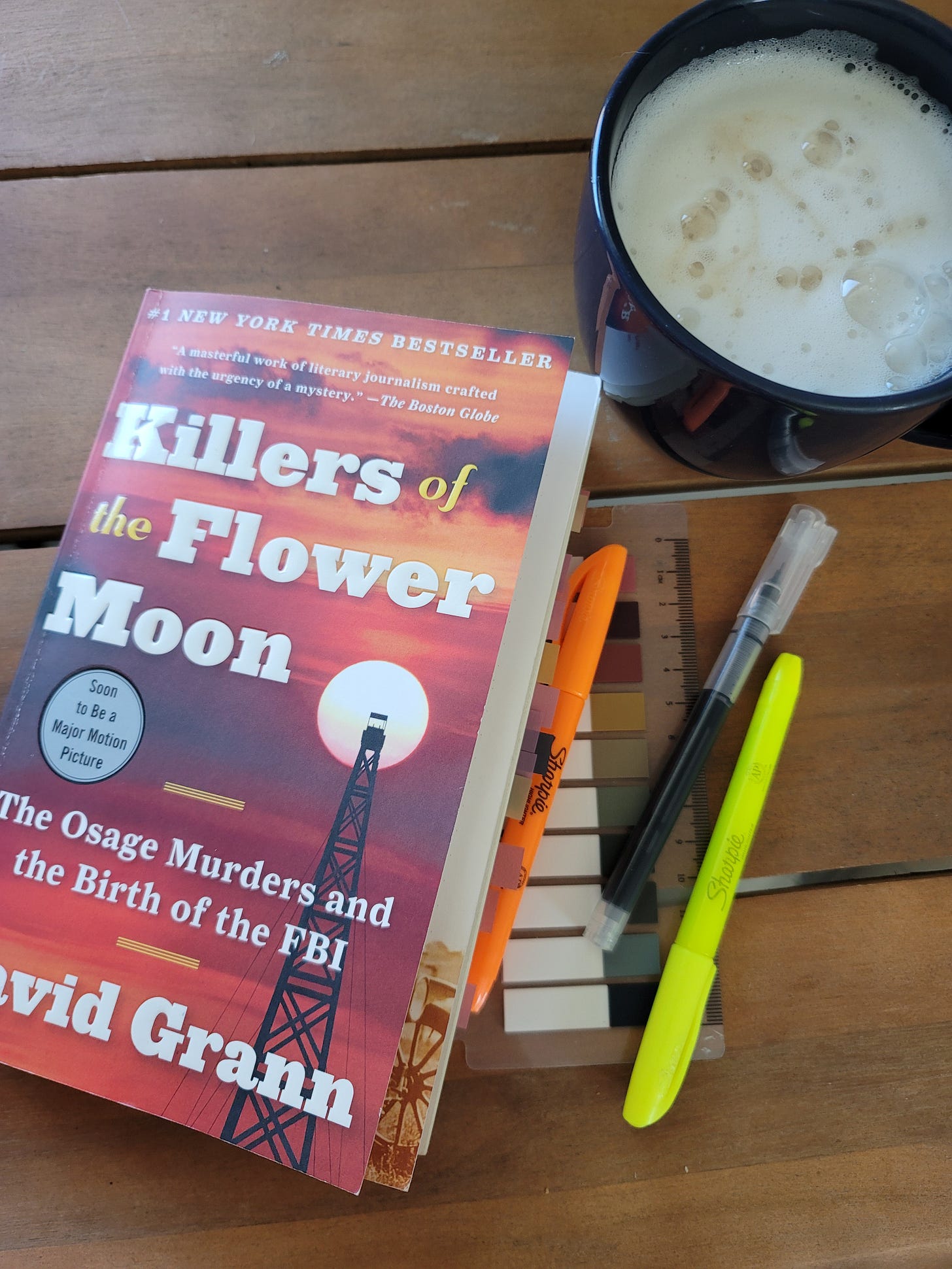"Killers of the Flower Moon" Week 1 Update
October 2023 Writer's Book Club
I can’t believe it took me so long to pick up this book. I’m blown away by how quickly Grann pulled me in. I don’t know what I was expecting, but I wasn’t expecting this.
I’ve just finished the first part, “Chronicle One: The Marked Woman,” and I’ll be diving into “Chronicle Two: The Evidence Man” this week.
So far my book is COVERED in stickies, highlights, and margin notes.
Here are a few things that stand out to me so far:
Setting
Grann paints us stunning word pictures of early twentieth century Oklahoma. I grew up out in the middle of nowhere Oklahoma, and Grann’s word pictures weirdly make me nostalgic (even though I still live in the state). He often mentions the wildflowers (of which we have many) and the oil derrecks.
Smooth A** Exposition
I’m impressed with how Grann introduces exposition into the narrative. He chooses the perfect moments to share relevant information, like Osage traditions, so there is never any info dumping. And because of this, these perfect moments hit harder.
For instance, after Anna’s death: “Someone, though, retrieved one of Anna’s earrings from her body and brought it to [her] mother… Lizzie instantly recognized it. Anna was dead. As with all Osage, the birth of her children had been the greatest blessing of Wah’Kon-Tah, the mysterious life force that pervades the sun and the moon and the earth and the stars…” (pg 23). Then he goes on to explain the importance of Wah’Kon-Tah to the Osage culture.
Building Tension
This is also impressively written like a murder mystery. Fear settled onto the family and Grann successfully settles it around you, too. His prose is vibrant (much like the Oklahoma wildflowers) keeps me on my toes and on the edge of my seat.
Making Us Care
Grann also shares with us early on the racial injustice against the Osage people - he doesn’t hold back in portraying the harsh realities faced by this Native American community. The story is incredibly haunting and sobering.
I’m very excited to read Chronicle Two this week. Each week, I’ll put out a new update post, and then after we’ve finished reading, I’ll release an essay post reviewing and discussing the narrative techniques Grann used in this novel and what we, as writers, can learn from him. That last post will only be available to paying subscribers, so if that is of interest to you, subscribe below!
What are your thoughts so far? As a writer (non-fiction or otherwise), what stands out to you that you’d like to apply to your own writing?



